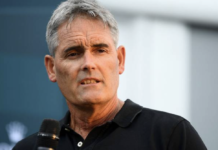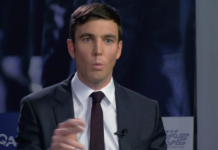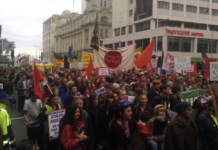What is an open secret? An oxymoron, obviously — a contradiction in terms, capable of being both right and wrong at the same time.
It is “an open secret,” according to Newsroom’s co-editor Mark Jennings on Wednesday 13 November, “that the Government is planning some sort of merger between TVNZ and RNZ.” But — hold the front page — two days later Jennings is back with an update: “A report leaked to RNZ’s political editor, Jane Patterson, seems to suggest that Broadcasting Minister Kris Faafoi favours the idea of creating a brand new organisation as opposed to merging TVNZ’s and RNZ’s existing operations or putting more money in NZ on Air.”
It wasn’t a secret, open or otherwise, that Faafoi had ordered up new broadcasting policy after taking over the portfolio from Clare Curran 14 months ago. It’s taken that long for Jacinda Adern’s Arts and Culture Ministry to knock it into a shape suitable for taking to the Cabinet. What has been secret, obsessively and disgracefully, is the Machiavellian manoeuvring behind the firmly closed doors of Wellington’s broadcasting bureaucracy. The secrecy has extended, incredibly, to Faafoi’s appointment of a shadowy advisory group to tell him what to do next.
As Yogi Berra said “It’s like deja vu all over again.” This advisory group is the third assembled by a Labour-led government to accommodate the opposition of powerful vested interests — such as TVNZ, television producers, the advertising industry, the Treasury and NZ on Air — to any move to set up a non-commercial television channel.
The first, kicking off two dismal decades of dither, was called The Officials’ Committee on Broadcasting Issues, assembled in haste in 2000 to stifle any hopes that Helen Clark’s Broadcasting Minister, Marian Hobbs, had of making one of TVNZ’s channels non-commercial.
The second was Curran’s “Public Media Ministerial Advisory Group on the Establishment of a Public Media Funding Commission”, disbanded after she resigned in a muddled mumble in September last year. If her successor’s advisory group has a name it is a closely guarded secret.
What’s in a name? Well, the key difference between the Hobbs committee and the Curran group is that the former was about public broadcasting and the latter is about public media. Trading on the public’s acceptance of taxpayer funding being used a legitimate source of revenue for non-commercial broadcasters, NZ on Air has quietly expanded the range of recipients beyond broadcasters to include newspaper publishers, primarily Australian-owned Stuff and NZME, and websites such as Newsroom and The Spinoff, all of which also earn revenue from sales, subscriptions, advertising and sponsorship.
At the same time, journalists are being encouraged by their employers to spin a woeful tale of economic hardship in their industry at the same time as promoting themselves as being as indispensable as doctors, nurses and teachers to the functioning of civil society. Whole new genres such as “public interest journalism” — as if there was another kind — have opened up to absorb the funding already flowing from the government’s broadcasting funding agency.
NZ on Air’s addition to the vested interests opposed to a non-commercial channel is an important difference between the current funding fandango and the Clark government’s ill-fated imposition of a charter on TVNZ. A de facto ministry of broadcasting, NZ on Air has stepped into a policy-making vacuum at the Arts and Culture Ministry, helping it greatly in its real purpose of securing ever greater sums of taxpayers’ funds for the screen production industry. The increasing use of the internet over the past five years for streaming video has opened up an infinite expanse for screening local content.
But what is “public media”? This was the question that TVNZ posed in its 12 March 2018 submission to Curran’s Public Media Ministerial Advisory Group. Saying that industry feedback was at risk of being misaligned and incomparable until there was an accepted definition of ‘public media’, TVNZ asserted that “An agreed definition will be a critical prerequisite for the Advisory Group or the Commission to properly discharge is functions.”
Curren’s proposed Public Media Funding Commission was still-born, never getting a chance to discharge its functions and thereby avoiding the need to define public media as a opposed to public broadcasting. Both terms are now used interchangeably, often in the same breath, by politicians and journalists seemingly unaware of the critical difference between them. “We do need to support public broadcasting,” the prime minister and minister for arts, culture and heritage, said on 14 November. “We’re certainly wanting to support public media as much as we can,” her broadcasting minister said the same day.
Faafoi promises “announcements by the end of the year” — as he has done all year. Further procrastination into the New Year could have people asking if Kris Faafoi is the new Phil Twyford.
One reason for the December deadline could be the need to wait for the publication of RNZ’s 2018-19 annual report which should contain information about the performance of its Video Delivery Capability Project (VDCP).
Given $3.5 million for capital expenditure in this year’s Budget to cover establishment costs through to 2022, RNZ called in May for proposals “to develop a video delivery system capable of distributing content to a range of systems, and an integration into the Freeview on Demand platform”. A contract was signed on 30 September with the Sydney office of US cloud content services and video platform provider, Brightcove.
Next generation television, or TV 2.0, is the promise on Brightcove’s web page; it’s video platforms deliver “stunning TV-like experiences to every device and manage ad-blockers with optimised ad delivery”.
If this is Labour’s fabulous “new entity” to replace RNZ and TVNZ, it only remains to decide how it will be funded and what to do with the old broadcasting system for viewers who just want the news, rugby, Country Calendar and Fair Go.
To be continued…
Tom Frewen is a journalist mainly in print and radio, both commercial and publicly funded. He reported on the NZ House of Representatives for 22 years, starting the Today/Week in Parliament programmes in 1994. He also established Mediawatch on RNZ, fronted first by Russell Brown and now by Colin Peacock. Now retired and watching a government of teachers join forces with journalists to destroy the Fourth Estate in New Zealand.





